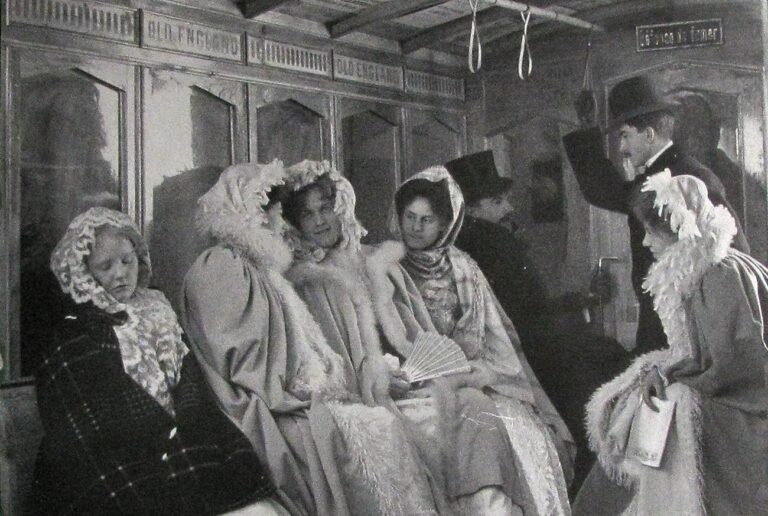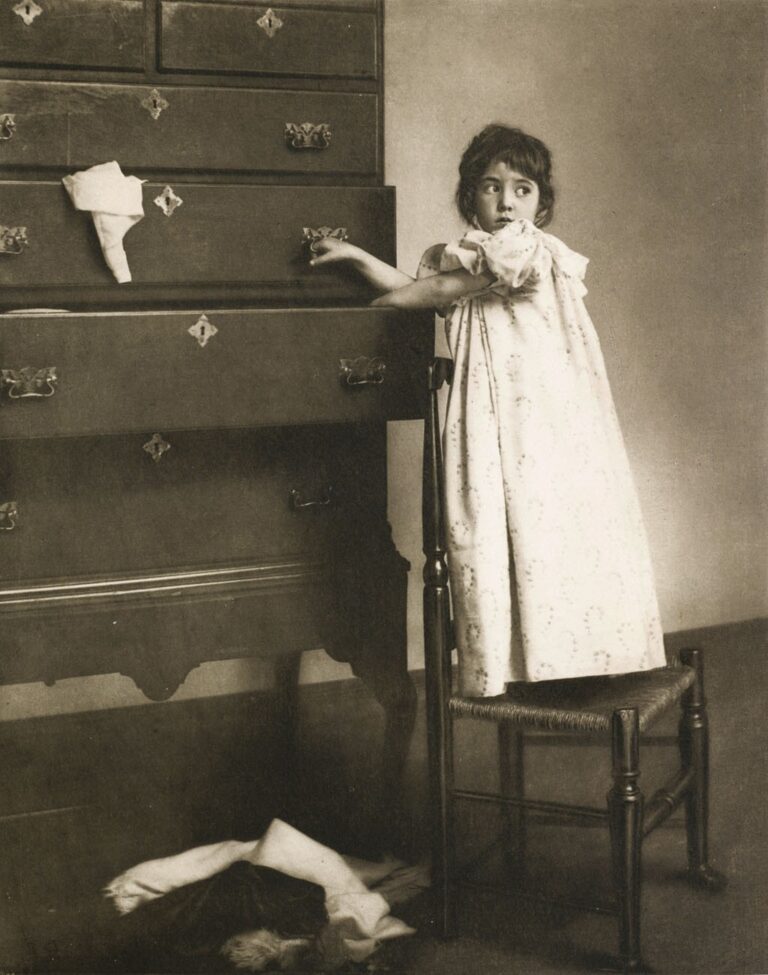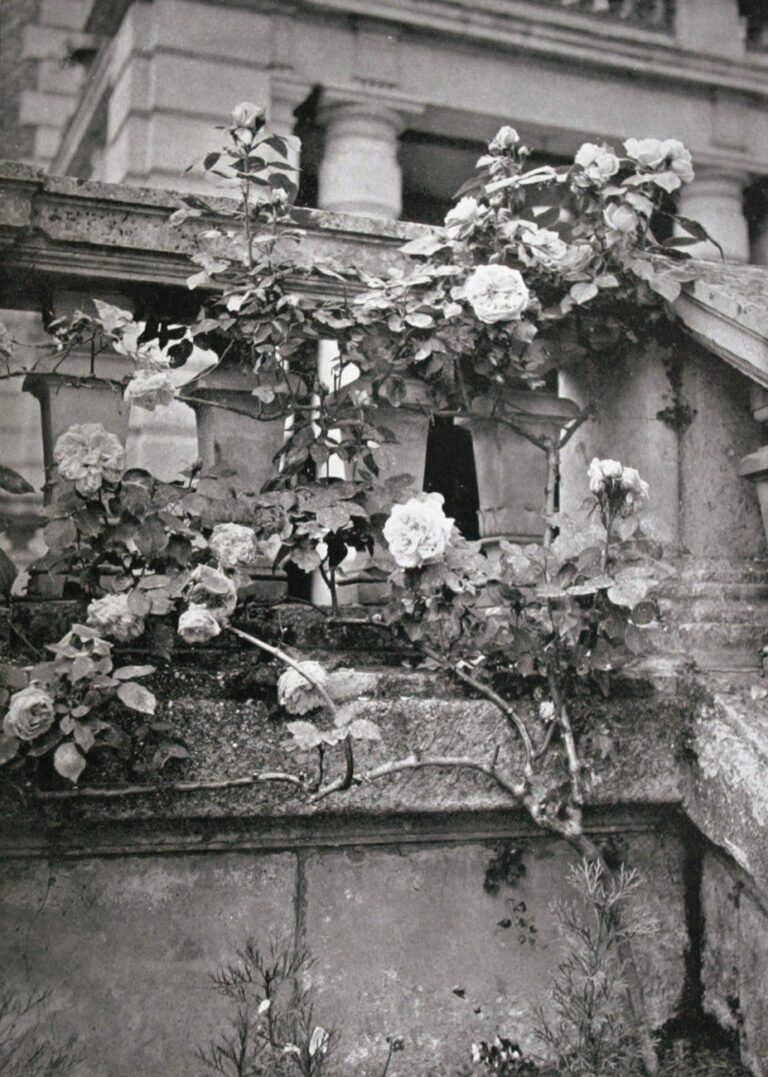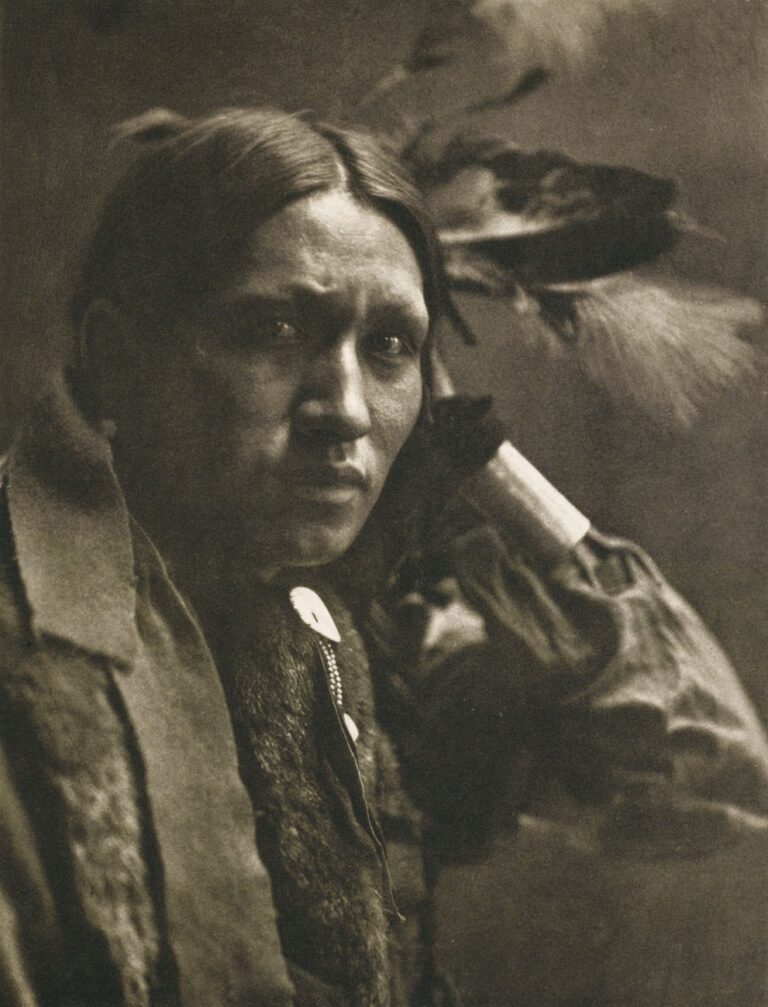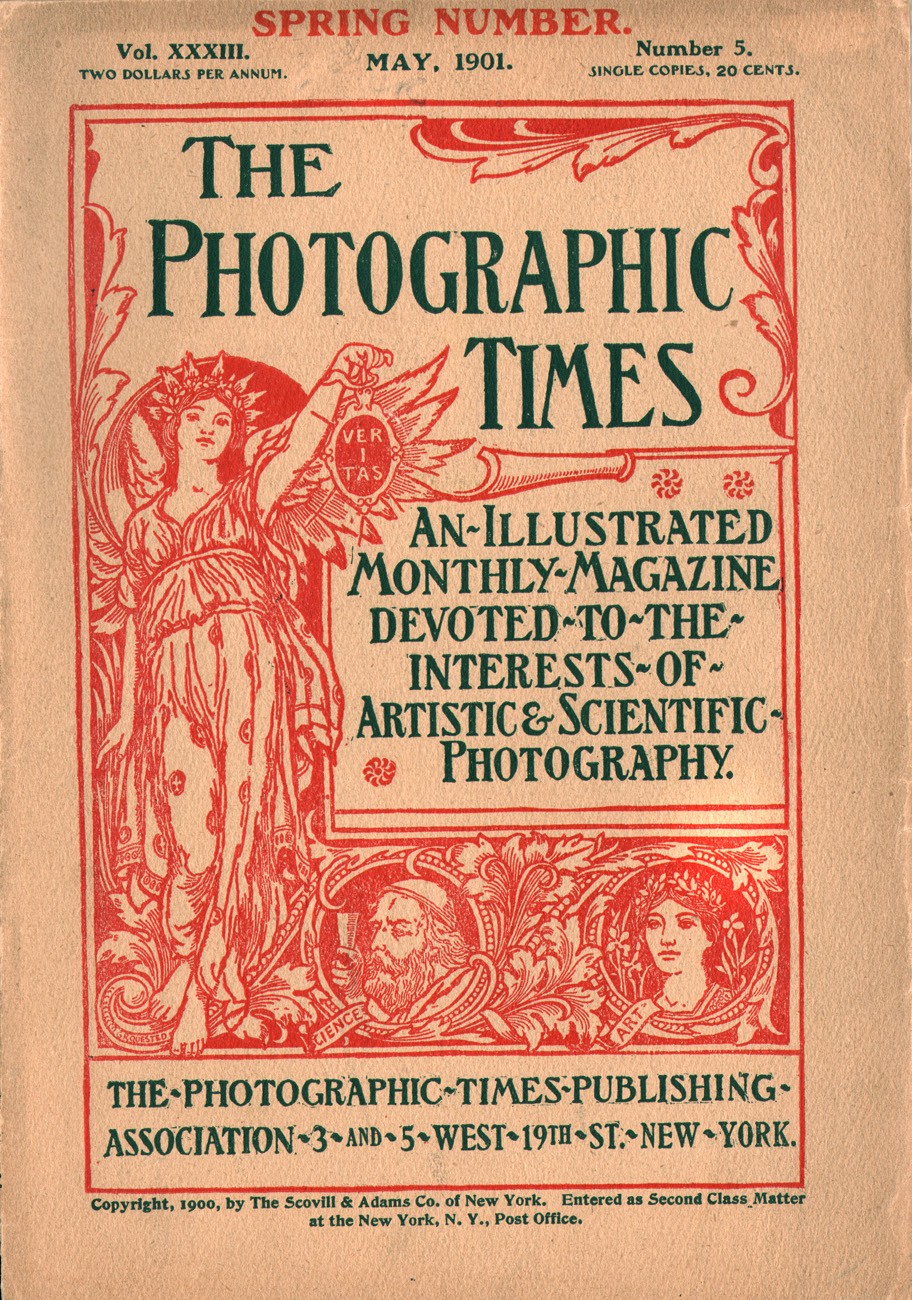
Cover: The Photographic Times: 1901
Beginning with the January, 1901 issue, The Photographic Times shrunk in size from 11.5 x 8.75″ to 10.0 x 7.00″. The price was also reduced from 35¢ to 20¢ an issue, or $4.00 to $2.00 per year. The cover design, featuring a wood engraving printed in red and black by English artist George Richard Quested, (b. 1860) remained unchanged since it was first used for the journal as early as 1895. (1.)
Featuring the Roman goddess Veritas holding out her lamp while lighting the way, the design is similar to the bookplates Quested specialized in. Complimenting the subtitle to the journal: An Illustrated Monthly Magazine Devoted to the Interests of Artistic & Scientific Photography are portraits along the lower margin featuring a bearded man holding a beaker for Science and woman for Art. Credit for G.R. Quested appears in the lower left corner of the “bookplate” design next to the foot of Veritas.
It is not known how Quested received the Photographic Times commission. However, J. Gleeson White, the editor in chief of The Studio magazine, who became very involved with photographic criticism with the birth of Photograms of ‘95, may have had a hand in recommending his talents to The Photographic Times Publishing Association. In 1896, White wrote the article Some Recent Book-Plates for The Studio, illustrated by several examples by Quested and commenting thus about his work:
Another quasi-armorial composition for Edward G. Moody, by G. R. Quested, is spirited and obedient to the traditions of its style. It is curious to find that although at first sight it appears to be an “armorial,” yet it is really absolutely non-heraldic. But as a curious link between the two opposite styles it is distinctly interesting. (2.)
The fine composition by George R. Quested, for Dr. John Paul Malecki, is a capital instance of a pictorial plate, so broadly schemed that it loses the mere picture and gains a certain monumental effect. In a smaller size it would fulfil its purpose still more admirably, and deserves to be reproduced by the new Swan line Etching process, whereby impressions from an intaglio plate would give it the richness of an old copperplate frontispiece, which its composition and scheme suggest. (3.)
The same year, his work was described in the Journal of the Ex Libris Society published in London:
The Studio of 15th June, 1896, has some remarks upon the recent Book-plate Exhibition of the Ex Libris Society. The writer noted a distinct advance in the number and quality of modern designs…G. R. Quested exhibited plates for Sir Philip Rose and Captain Richard Dane, both decorative and admirable. (4.)
Quested is listed in the rolls as a member of the society.
In 1898, he was awarded the Prize of Five guineas in The Studio prize competition for his Design for a Certificate. The award mentions Caritas (the theological virtue of charity) as his winning certificate subject. (5.)
The Studio lists the following addresses for Quested:
1894: 11 Abbey Gardens, St. John’s Wood, London
1897: 240 Rotton Park Road, Edgbaston, Birmingham
Quested further exhibited at least two works: Design for a Book-Plate (1631, 1535, (sic?) 1683) in the Exhibition of the Royal Academy of 1897. (6.)
Original copy for this entry posted to Facebook on April 29, 2012:
One of my first orders of business regarding the planned posting this year for a portion of the gravure plates included in the American journal The Photographic Times was the deciphering of its’ striking Veritas cover. This would seem important after all; she is meant as a symbol to Truth itself- the Roman goddess represented as lighting the way in order to give clear passage to the understandings of Science and Art in relation to Photography-a marriage its’ editors sought to convey to their readership. But truth was a bit harder to come by in giving credit to the artist whose creation graced the cover from at least 1895 to 1901. With the aid of a magnifying lupe and deep resources of the web however, I’ve broken the story so to speak, and can truthfully announce that celebrated English bookplate designer George Richard Quested brought her to life.
1. It is not known by this editor if the Quested Veritas design was used before 1895.
2. Some Recent Book-Plates: by Gleeson White: in: The Studio-an Illustrated Magazine of Fine and Applied Art: London: Vol. 7: 1896: p. 95
3. Ibid: p. 96
4. Journal of the Ex Libris Society: edited by W.H.K. Wright: A. & C. Black: London: vol. VI: 1897: pp. 115-116
5. Awards in “The Studio” Prize Competitions: Design for a Certificate: in: The International Studio-An Illustrated Magazine of Fine and Applied Art: New York: Vol. II: 1898: p. 205
6. The Exhibitors: in: The Exhibition of the Royal Academy: Wm. Clowes and Sons, Limited, printers to the Royal: London: p. 149
